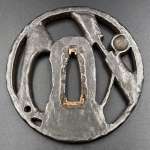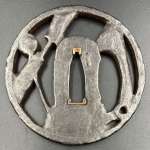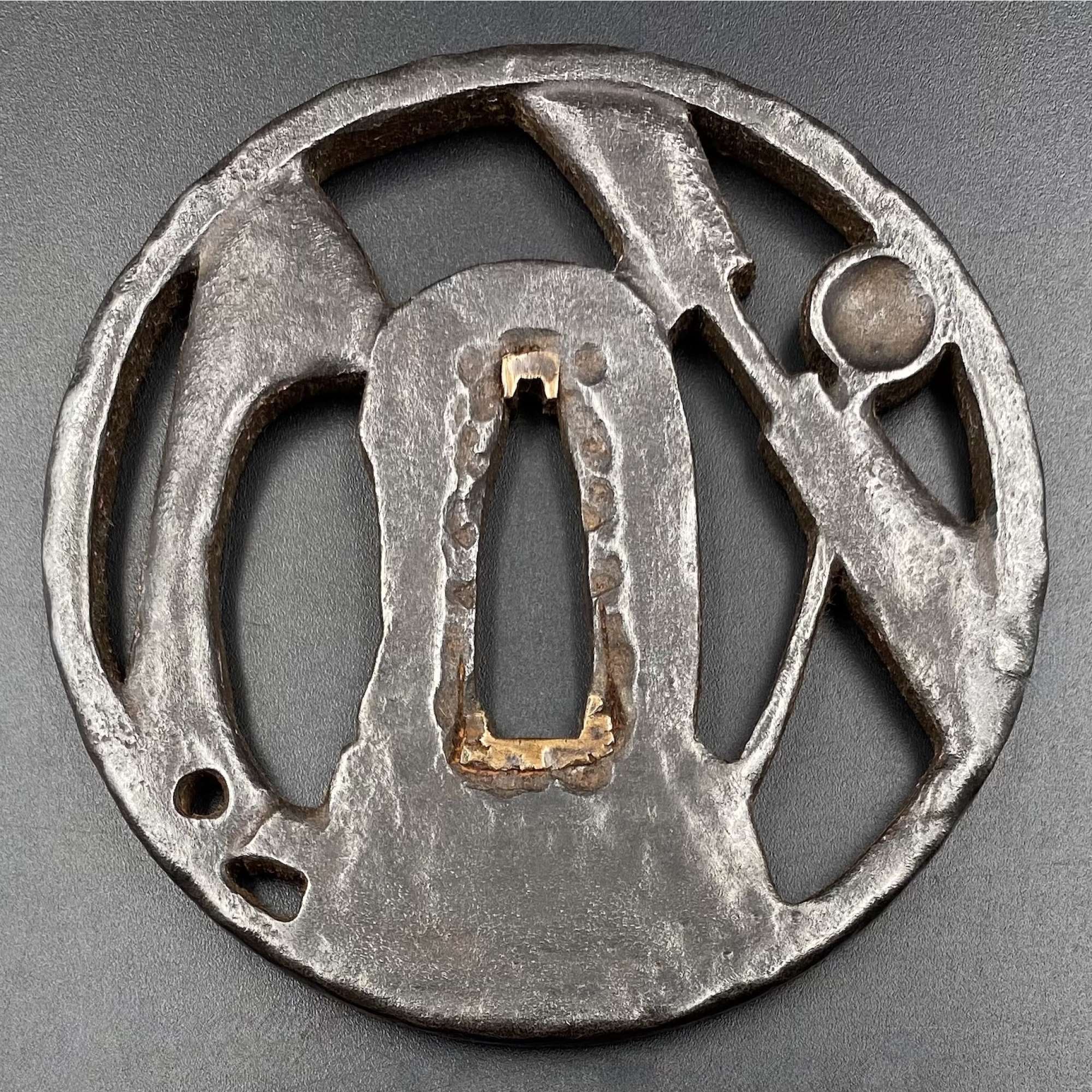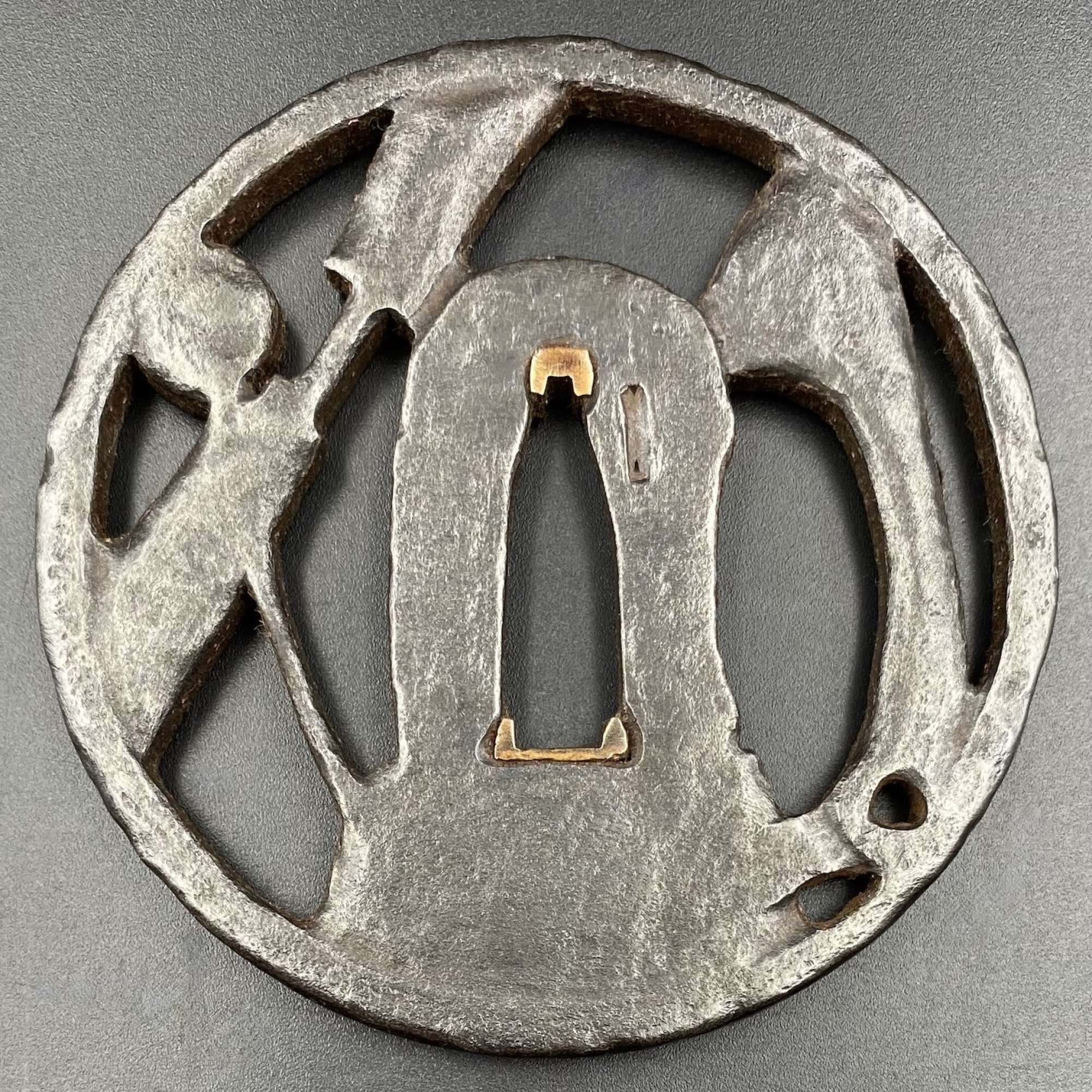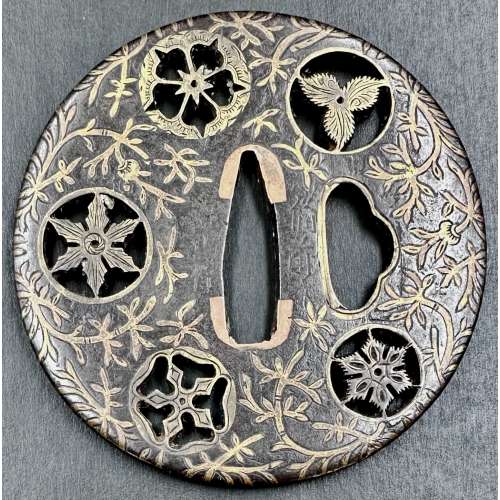Iron tsuba of round form decorated with a ladle, pestle, mortar, and rice sickle in positive silhouette openwork (nikubori-ji-sukashi). Slightly rounded rim with iron bones (tekkotsu). Seppa-dai plugged with copper fittings (sekigane). Silver patina. The design resembles mochi-making utensils; mochi (rice cake) symbolizes longevity. Kanayama school, c. 1590 (Momoyama period).
Note: unusually large size for a Kanayama tsuba: diameter 79.5 mm, thickness at seppa-dai: 5.5 mm, at rim: 6.0 mm.
Concerning the design: While the ladle and pestle are clear, the mortar (under the seppa-dai), and the sickle (to the left) require certain imagination.


